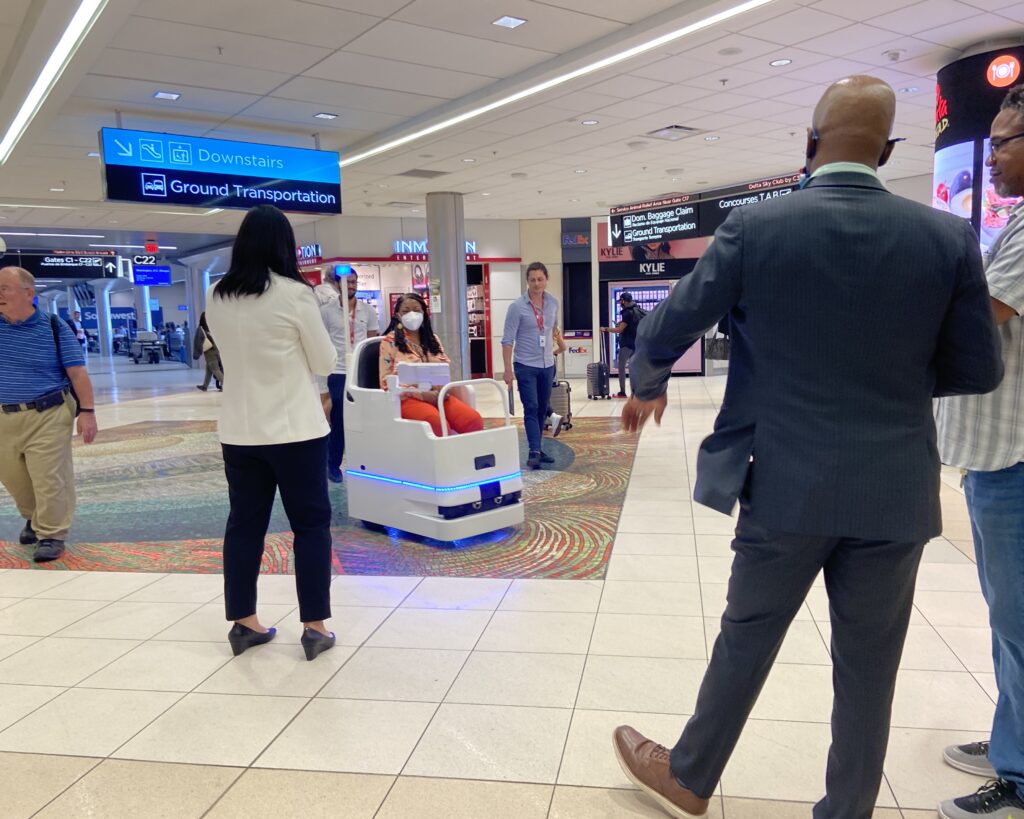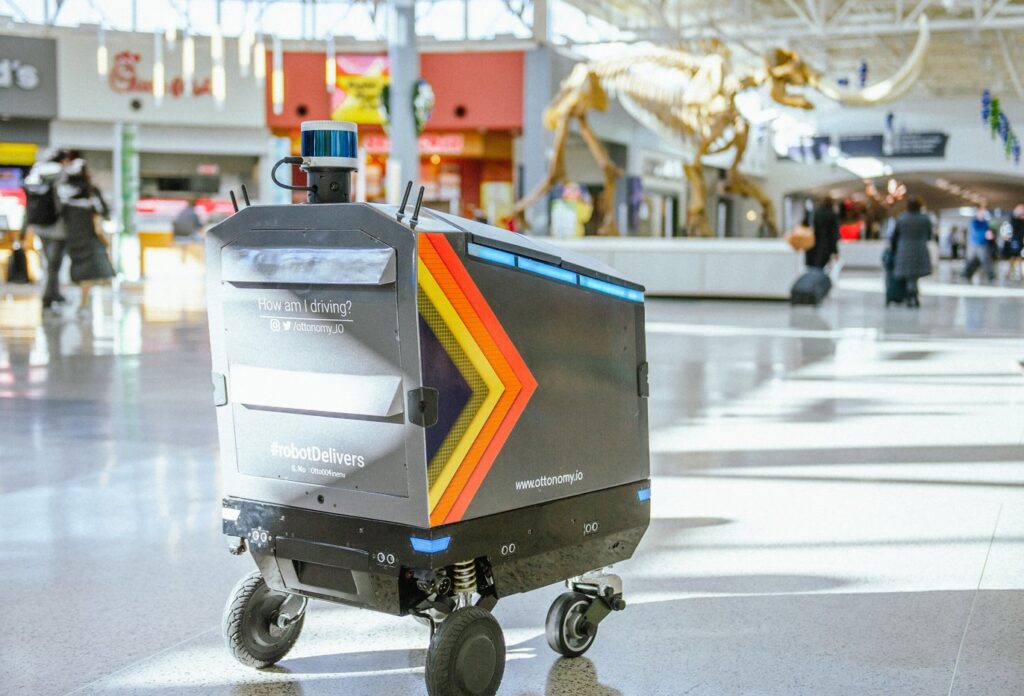How airports can be the epicenter of the robot revolution
Share
Many airports are seeing an increase in passengers with reduced mobility (PRM) due to aging populations. One solution to help these passengers get to their gates and to their aircraft is robotics.
This was one of the main points to come out of a SXSW panel session called, “Airports: The Epicenters of the Robot Revolution!”

In the panel, Jessica Yip from Vancouver based A&K Robotics, talked about how the company’s self-driving pods are helping to enable a more independent airport PRM experience.
As well as working with Vancouver Airport, A&K Robotics is testing its self-driving technology with Atlanta Airport and Southwest Airlines. This is taking place at Atlanta Airport’s departure level in Concourse C.
According to Jessica Yip, airports are the ideal place to test robotics and autonomous vehicles. It’s a large self contained space, and unlike on public roads, you can set the self driving pods to work at equivalent to a fast walking speed.
Another benefit of the solution is that it frees staff up for other jobs. This comes at a time when some airports have been struggling to fill vacant positions.
Helping passengers with mobility issues is one area where robotics and automation has a role to play, but there are many others.
From autonomous luggage tugs to robot dogs
Naashom Marx, director of strategic innovation – advanced mobility at Cincinnati / Northern Kentucky International Airport (CVG) gave a number of other examples, currently in use at her airport.

One is autonomous pods that bring food delivery to so-called ‘gate huggers’ who spend most of their time at the gate.
Here, CVG has been working with Ottonomy, which has deployed its “Ottobots” at the airport.
Passengers order grab and go, travel and beverage items and the robot brings it directly to the gate for them.

Then, robotic dogs are positioned around the airport perimeter.
Earlier this year, CVG announced the introduction of “ROVR” (Remote Observer Virtual Responder) through robotics company Ghost Robotics.
Rather than having human members of staff try to spot wildlife or bird populations entering the airport, which can cause disruption to flight traffic, the robot can do the job much more efficiently.
This includes assessing factors such as what kind of fauna is there, or seeing if there is any garbage that may need to be removed.
The process of bringing luggage from the terminal to the aircraft is another area ripe for automation. CVG has been working with technology company ThorDrive to carry out tests.
In addition to those examples taking place right now, Naashom Marx put forward a wish-list for other areas where robots and automation could take over from human staff.
One would be automated lawn mowers that could efficiently cover the very large airport estate. Another is autonomous snow removal machines.
Marx then pointed to the semi-robotic taxiing systems being trialed at Amsterdam Schiphol Airport, as an example of robotics which has both potential safety (removing human error) and sustainability benefits.

Naashom Marx and Jessica Yip were joined on the panel by Joshua Hirschheimer from Porsche consulting, while the moderator was Dr Clyde Hutchinson from Team ABC Ventures.
Joshua Hirschheimer talked about how many airports are now creating a so-called digital twin of themselves. An online replica of the airport estate, this can serve as a test-bed for new companies to develop new technologies.
One example of an airport doing that is Vancouver International Airport (YVR), which launched its digital twin in March 2022.
Interested in hearing more about aviation technology, and listening to some world class speakers on the topic? APEX Tech takes place next week, for more information click here.


